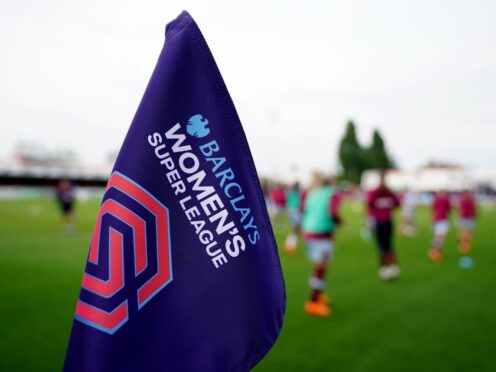Football players in the Women’s Super League were six times more likely to experience a muscle injury in the days leading up to their period, according to research.
A longitudinal study conducted by University College London, the University of Bath and St Mary’s University suggested that there could be “increased injury risk windows” at certain times during the menstrual cycle.
The study recorded time-loss injuries and cycle data for female footballers based at one WSL club across three seasons. It tracked 593 cycles across 13,390 days and found in that time that 26 players experienced 74 injuries.

During the study, the authors split the cycle into four main phases with assumed hormonal changes and found that a muscle injury was six times more likely to occur in the pre-menstrual phase (where oestrogen and progesterone decrease) and five times more likely in the early-mid luteal phase (after ovulation where oestrogen and progesterone are assumed to increase and remain high) compared to when in the menstrual phase.
The study indicates a need to consider the menstrual cycle in elite sport and senior author Dr Georgie Bruinvels from UCL Surgery & Interventional Science and the Institute of Sport, Exercise & Health (ISEH) believes it is an area that needs to be explored further.
Dr Bruinvels said: “While these results must be viewed with caution, this data highlights a need to investigate this area further.
“Given the growth of women’s sport it’s an exciting time to be working in female physiology, but there are a number of known challenges when conducting research with female athletes, in part explaining why there is such a significant sex data gap.
“Conducting large-scale research is complex but must be prioritised to best support female athletes, and we hope studies like this will pave the way for this.
“Every woman has their own unique physiology, so it’s crucial to support and empower them in the right ways.

“If future research demonstrates that there are risk windows for certain injury types, we should be proactive in mitigating these risks to enable female athletes to exercise and compete on any given day.”
Dr Jo Blodgett, an author of the study from UCL Surgery & Interventional Science and ISEH also believes more players need to “continually track injury incidence, menstrual cycle and symptoms” in a “standardised manner”.
“Though our sample size for this research was relatively small, we observed clear links between cycle phase and injury prevalence, and the size of the association – six times higher in the premenstrual phase and five times higher in the early-mid luteal phase for muscular injuries – was quite large,” Dr Blodgett added.
“To better understand the variability in injury risk across the cycle we need more players and teams to continually track injury incidence, menstrual cycle and symptoms in a standardised manner.
“At the elite level, injuries to your squad can mean the difference between winning and losing, the difference between being crowned champions and runners-up.
“But perhaps more importantly, it means pain and suffering for players that could perhaps be avoided with better player-centred support.”
